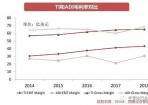
"每天坚持,你就是下一个Native Speaker!"
NS训练计划,第2776篇,科技专题
内容 / Chopin Hong,编辑 / Carrie Qin
我们从海量国外权威媒体、博客、专栏作者的文章中精选素材,每日推送,鼓励成员长期运用英语,和Native Speaker一样强化语言的全方位能力。
PART I: SPEAKER
Flamingos Can Be Picky about Company
By Jason G. Goldman,
May 7, 2020
[Rephrase 1]
Source:Scientific American
文本Mp3下载,请点击页末“阅读全文”查看。
PART II: SPEED

How tiny ‘dead’ galaxies get their groove back and make stars again
By Ken Croswell,
May 8, 2020
[Time 2]
Talk about sibling rivalry. Most of the smallest galaxies are “dead,” making no new stars. Now, computer simulations reveal why it is so hard for a tiny galaxy to rejuvenate itself: The galaxy’s existing stars fight the birth of any new ones, even after fresh fuel for star formation falls into the galaxy.
These simulations also show that eventually new stars can arise and make the galaxy sparkle again. But it can take many billions of years for a little galaxy to get its star-making mojo back, researchers report April 20 at arXiv.org.
Galaxies spawn new stars from gas, but the gas must be cold and dense to collapse into stars. That requirement spelled big trouble for little galaxies soon after the universe’s birth, when ultraviolet radiation from galaxies broke intergalactic hydrogen atoms into protons and electrons. This process, called reionization, let radiation stream through space and heat gas inside galaxies. The smallest galaxies had so little gas to begin with that it all got zapped by the ionizing radiation. As a result, the typical low-mass dwarf galaxy stopped creating stars long ago.
In these tiny galaxies, “reionization killed star formation,” says Martin Rey, an astrophysicist at Lund Observatory in Sweden. All the stars in most low-mass dwarf galaxies today are therefore ancient.
But two unrelated dwarf galaxies in the constellation Leo, named Leo P and Leo T, never got the memo. Puny even by dwarf standards, both galaxies still eke out new stars. They are the least luminous star-forming galaxies known: Leo P’s stellar mass is only 560,000 solar masses, about 0.001 percent of the Milky Way’s total, and Leo T has even fewer stars. Both galaxies are the Milky Way’s neighbors — Leo P is 5 million light-years and Leo T is just 1.3 million light-years away — so astronomers can see the newborn stars.
[305 words]
[Time 3]
To explain how such small galaxies thrive today, Rey’s team ran computer simulations of the gas, stars and dark matter in low-mass dwarf galaxies. The simulations showed that infalling gas can resuscitate dwarf galaxies and reignite their star formation, a finding supported by earlier work. But “we find that it takes quite a long time,” Rey says.
The problem is that old stars in the dwarf galaxy prevent the birth of new stars by stirring up the gas, the researchers found. In particular, exploding white dwarf stars and winds from large red aging stars heat the gas, delaying the new era of star birth. In fact, 6 to 8 billion years — about half the age of the universe — can pass before little dwarf galaxies resume their star-making careers and resemble Leo P and Leo T, the scientists report.
“Their results are very plausible,” says Kristen McQuinn, an astrophysicist at Rutgers University in Piscataway, N.J., who has studied Leo P in the past but was not involved with the new work. She says including the negative effects of the galaxy’s own stars makes the simulations unique.
Rey and his colleagues also found something else. “The kind of surprise and cherry on the cake was the fact that we can predict a new class of galaxies,” Rey says. The simulations show that some low-mass dwarf galaxies have acquired gas but not yet begun to mint new stars.
No definite examples of gas-rich dwarf galaxies that lack star formation are known, Rey says, but he predicts future observations will uncover them. New optical telescopes should find the faint old stars in these galaxies, and radio telescopes should detect their hydrogen gas, which may someday spawn new stars.
[284 words]
Source:Science News















